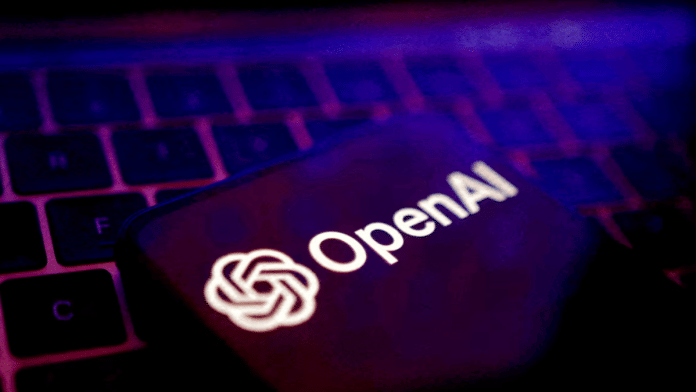Thank you dear subscribers, we are overwhelmed with your response.
Your Turn is a unique section from ThePrint featuring points of view from its subscribers. If you are a subscriber, have a point of view, please send it to us. If not, do subscribe here: https://theprint.in/
The ongoing copyright infringement dispute between Asian News International (ANI) and OpenAI has emerged as a significant legal battle that could reshape the landscape of copyright law in the age of artificial intelligence (AI). This case, which is currently being heard in the Delhi High Court, marks a pivotal moment not only for ANI but also for the broader media industry and AI developers globally. The implications of this lawsuit extend far beyond the immediate parties involved, raising critical questions about intellectual property rights in an era where AI technologies are rapidly evolving.
ANI has accused OpenAI of unlawfully using its copyrighted news content to train its large language models (LLMs), including ChatGPT. The agency claims that OpenAI’s AI systems have been trained on its original news articles without permission, constituting a clear violation of copyright laws. Specifically, ANI alleges that ChatGPT can reproduce its articles verbatim and often provides false attributions, which could damage ANI’s reputation and contribute to the spread of misinformation. This lawsuit is particularly noteworthy as it is the first of its kind in India, setting a precedent for how Indian courts may handle similar cases in the future.
OpenAI’s defense rests on several arguments, primarily asserting that copyright law does not protect facts or ideas but only the expression of those ideas. The company’s counsel contends that ChatGPT does not reproduce ANI’s content in its original form but rather presents information based on user queries, thus falling outside the scope of copyright infringement. OpenAI has also pointed out that it has taken steps to blocklist ANI’s domain from its training data following a legal notice issued by ANI in September 2024. This raises an essential question about what constitutes fair use in the context of AI training: if content is publicly available, does that automatically grant AI companies the right to utilize it for their models?
The Delhi High Court has recognized the complexity of this case and appointed an amicus curiae to assist in navigating the intricate legal issues at play. This move underscores the court’s acknowledgment that this dispute is not merely a matter between two parties but rather a reflection of broader societal concerns regarding copyright and technology. As AI continues to advance, the legal frameworks governing intellectual property must also evolve to address these new challenges effectively.
One of the central lessons from this dispute is the urgent need for clear guidelines regarding how copyrighted material can be used in AI training. As AI technologies become more integrated into everyday life, questions about ownership and authorship will become increasingly pressing. The ANI-OpenAI case serves as a wake-up call for both content creators and technology developers to engage in dialogue about fair use and licensing agreements that respect intellectual property rights while fostering innovation.
Moreover, this case highlights the potential risks associated with AI-generated content. The possibility of misinformation being attributed to reputable news agencies poses a significant threat not only to those agencies but also to public trust in media as a whole. If AI systems can generate plausible yet false information based on misattributed sources, it could lead to widespread confusion and undermine journalistic integrity. Therefore, establishing robust mechanisms for accountability and transparency within AI systems is crucial.
The outcome of this lawsuit could have far-reaching implications for how AI companies operate within India and potentially influence global standards for copyright law as it pertains to artificial intelligence. If ANI prevails, it may prompt other content creators to seek legal recourse against AI companies that utilize their work without permission. Conversely, a ruling in favor of OpenAI could embolden tech companies to continue using publicly available data with fewer restrictions, raising concerns among content creators about their rights and compensation.
In conclusion, the ANI versus OpenAI case represents a critical juncture in the intersection of copyright law and artificial intelligence. It underscores the necessity for a balanced approach that protects intellectual property rights while allowing for technological advancement. As courts grapple with these issues, it is essential for all stakeholders—content creators, tech companies, and policymakers—to collaborate on developing frameworks that ensure fair use while promoting innovation. This ongoing dispute serves as a reminder that as we navigate this new digital landscape, we must remain vigilant in protecting the rights of creators while embracing the transformative potential of AI technologies.
These pieces are being published as they have been received – they have not been edited/fact-checked by ThePrint.


